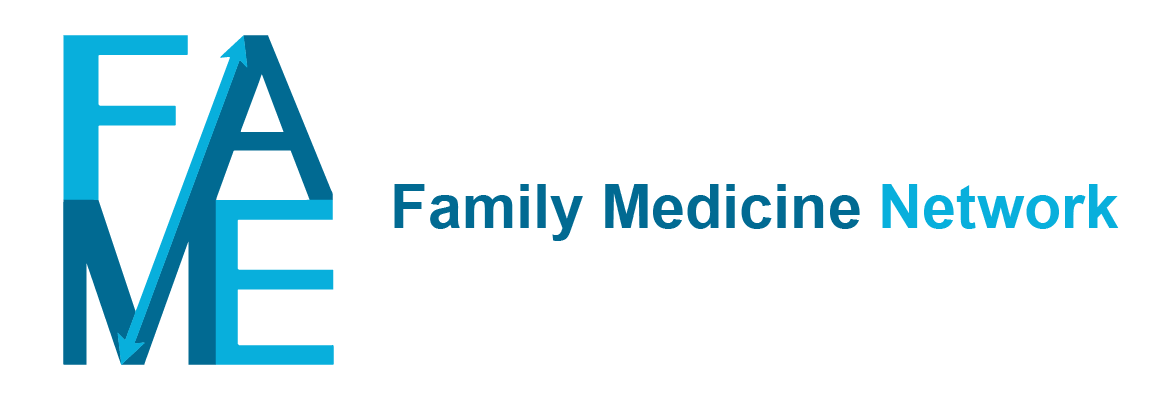Melanocytic naevi (moles) are benign proliferations of a specific type of melanocytes called ‘naevus cells’. They are only seldomly present from birth (congenital melanocytic naevi) but manifest themselves throughout life. Naevi are a normal phenomenon and new ones may develop as old ones disappear or grow. Especially during childhood and adolescence, the enlargement and increasing elevation of naevi will take place and can be regarded as a natural process. Sun exposure in childhood, heredity and skin type are factors related to the development of new naevi.
Most naevi remain benign and do not need treatment. They usually do not cause complaints, however, patients may ask for excision for cosmetic reasons. Naevi are mostly presented to the GP to check if they are benign.
Diagnosis is based on the clinical picture and the examination of melanocytic naevi considers their shape, colour, symmetry and size. Naevi have a wide variety of shapes but tend to be less than 6 mm in diameter, symmetric and with even pigmentation, have a round or oval shape, a regular outline, a homogeneous surface and a sharply demarcated border.
The distinction of normal (‘common’ or ‘banal’) naevi from other types of skin proliferations, especially from melanoma (the most serious form of skin cancer) is the focus of the examination. A melanoma only very rarely arises from a common naevus – it mostly appears ‘de novo’.
Atypical naevi (dysplastic naevi) are benign, acquired melanocytic naevi that share some of the clinical features of melanoma such as asymmetry, border irregularities, colour variability, or a diameter of more than 6 mm. The presence of five or more atypical naevi is associated with an increased risk of melanoma. In these cases, a referral to the dermatologist for periodic skin checks is advised.
A naevus is coded S82. If the patient seeks help for multiple naevi, they will be recorded together, with one ICPC code, and thus in one episode. Help for naevi in follow-up visits may also be recorded in the same episode.
S82 is used to code a common naevus and to code an atypical naevus. This means that based on ICPC-2 data, the distinction between common naevi and atypical naevi cannot be made.
The incidence of naevi is 17.5 per 1000 patient years, meaning 18 new diagnoses per 1000 patients per year. Women present to their GP with a new naevus more often than men. The incidence is 22.1 per 1000 female and 12.6 per 1000 male patients, respectively. Patients in the age group 15-44 years are those most likely to present with a new naevus. Link/Figure 1
The prevalence of naevi is 24.0 per 1000 patient years, meaning that among 1000 patients in a year, 24 search for help from their GP for naevi. Again, the prevalence is highest in female patients and in patients aged 15-44 years. Link/Figure 2 That said, ‘naevi’ are a health condition for which GPs provide care to patients from all sex and age categories.
The higher prevalence when compared to incidence implies that naevi often require repeated attention from the GP, which often crosses the calendar year border. In the case of naevi, this means that several GP encounters may take place over successive calendar years yet be recorded within the same (and not a new) episode. This may involve the recurrent examination of the same particular naevus, the same few naevi or different naevi over different encounters. An ongoing episode with the title ‘naevus’ (S82) may thus describe just one naevus but may alternatively describe multiple / different naevi.
The most common reason for encounter (RFE) for naevus is ‘naevus’. In 54% of all new episodes, patients have recognised the spot on their skin as a mole and present it as such. Patients also commonly present to the GP with the request to check their skin (*31, in 19%). In 5% of episodes, patients present with a request for an excision or removal of the naevus (*52). Link/Table 3 With increasing age, the RFE ‘request for skin check’ (*31) gradually becomes increasingly important to eventually (in the age group 75+) become a more common RFE than the RFE ‘naevus’ (S82). Link/Table 4 It is worth noting that the ‘age range’ can be altered to see RFEs in different age groups.
Of all the episodes starting with the RFE ‘naevus’, the final diagnosis was ‘naevus’ in 75% of episodes. Link/Table 5 This means that the condition is easily self-diagnosed. Other common final diagnoses in episodes starting with RFE ‘naevus’ are ‘other skin disease’ (S99, in 12%), and which includes actinic keratosis, ‘benign or unspecified skin neoplasm’ (S79, in 6%), including dermatofibroma, and warts (S03, in 2%).
Common interventions in episodes of naevus are referral to the specialist (*67, in 18%) and excision by the GP (*52, in 17%). These percentages may be higher than expected because of the benign nature of common naevi. This might be due to some under reporting by the GP of naevi that do not require intervention, for example when patients present with multiple problems in one consultation and finally ask for a naevus check. Histologic examination (*37) is recorded in 9%, exclusively after surgery by the GP. It is worth noting that these are percentages per year. Link/Table 6 Specialist referrals are usually to the dermatologist (in 15% of episodes), sometimes to the plastic surgeon and occasionally to the surgeon or ophthalmologist, although this is quite rare. Link/Table 7 No obvious sex differences were observed in the interventions made for naevi. Referral to the specialist was slightly more common (at 21% per year) in patients aged 45-74. Link/Table 8 Excisions by the GP were uncommon in children and generally absent in the youngest children (0-4). Link/Table 9
Hunt RH, Schaffer JV, Bolognia JL. Acquired melanocytic nevi (moles). In: UpToDate, Levy ML, Dellavalle RP, Tsao H, Corona R (Eds), UpToDate, Waltham, MA, 2023 Dutch patient leaflet: https://www.thuisarts.nl/moedervlekken/ik-heb-moedervlekken
